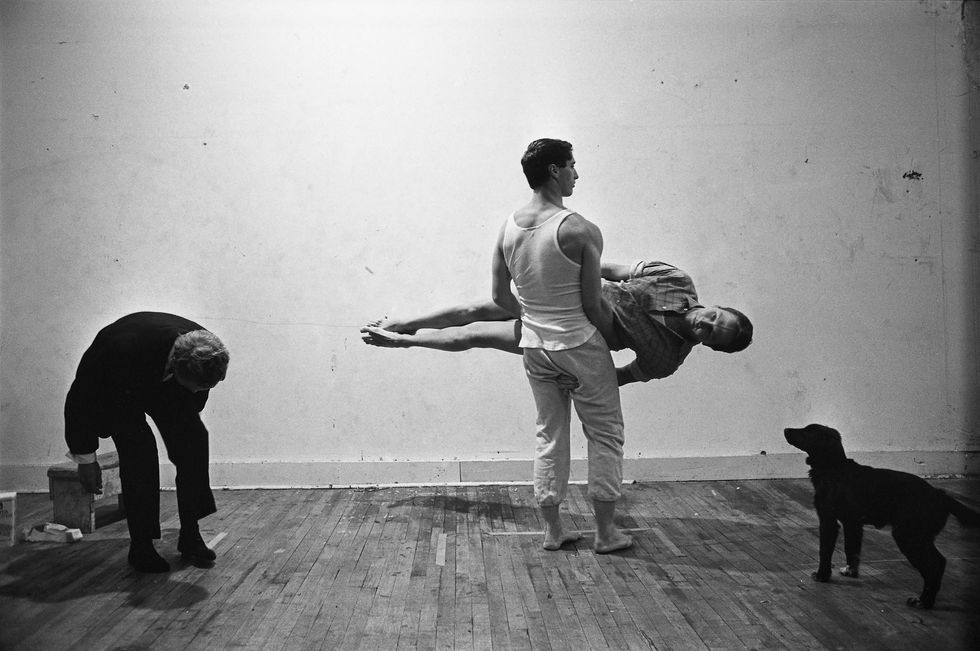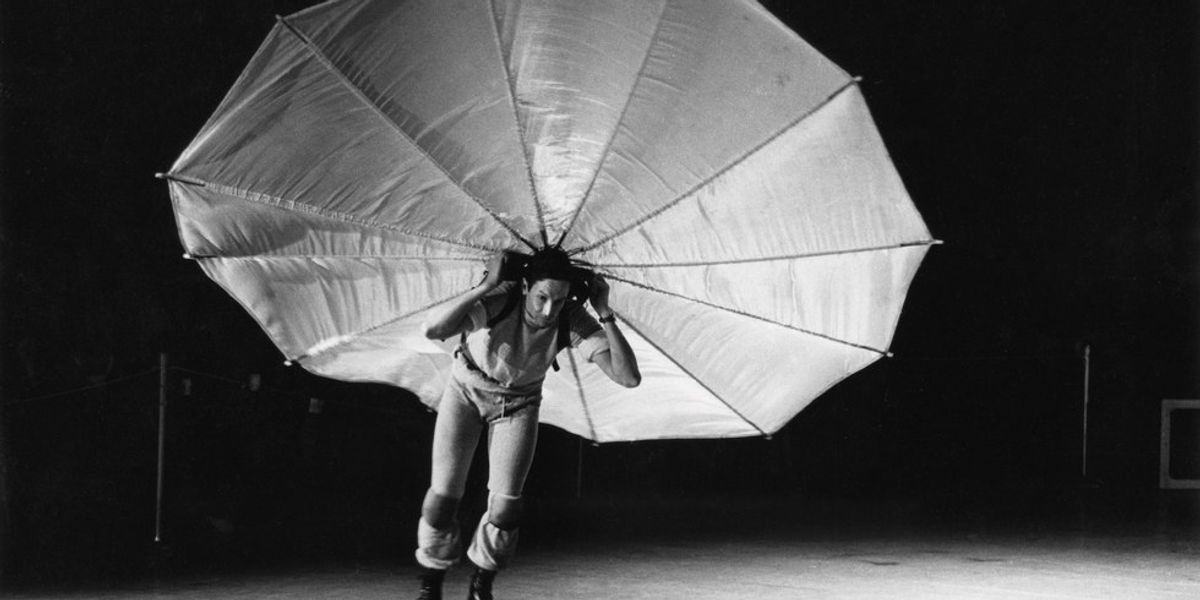When Art Dances: Inside the Rauschenberg Exhibit at MoMA
It’s well known that Robert Rauschenberg, one of the most famous American artists of the 20th century, made costumes and sets for Merce Cunningham, Paul Taylor and Trisha Brown. What you may not know is that he also choreographed and danced in many performances of his own devising. You can see evidence of them among the vast amount of paintings, sculptures and collages at the exhibit at the Museum of Modern Art called Robert Rauschenberg: Among Friends.
Rauschenberg fell in love with dance at Black Mountain in the 1950s. That is where he met Merce Cunningham and proceeded to work with him to design sets, costumes, lights and environments. As part of the anything-goes Judson Dance Theater in the ’60s, he unabashedly brought his ideas into live performance. For Pelican (1963, so titled by Trisha Brown), he wanted to disguise the fact that he wasn’t a good dancer so he taught himself how to roller skate—which he did with a parachute on his back. In Spring Training (1965) he had a mop, a bucket and half dozen eggs. Oh, and he was carried by a young man named Steve Paxton (co-founder of Judson Dance Theater and “father” of contact improvisation). In Automobile Tire Print (1953), Rauschenberg asked John Cage to drive over 20 sheets of paper, then took the tire tracks and mounted them on fabric. These are things we might now call “live art” but there was no word for it at that time.

Rehearsal for Spring Training (1965) with Paxton lifting Rauschenberg, PC Ugo Mulas
Another amazing talent who was also close to Cunningham, Charles Atlas has helped to design an inventive way to see Rauschenberg’s collaborations. There are videos in odd places, for example, embedded in the floor. These include works by Cunningham and Trisha Brown. In Brown’s Glacial Decoy, Atlas (who has also worked with Douglas Dunn, Richard Move and Yvonne Rainer), exhibits the parade of Rauschenberg photographs but also shows a video that is somehow veiled so that it feels ghostly—which now has special meaning since Trisha Brown just passed away in March.

Translucent veil showing Trisha Brown’s Glacial Decoy, PC Perron
Any dancer interested in video should see Robert Rauschenberg: Among Friends. In fact, any artist of any genre should see this exhibit. It will inspire you to break barriers between disciplines and soar with your most outlandish ideas.




